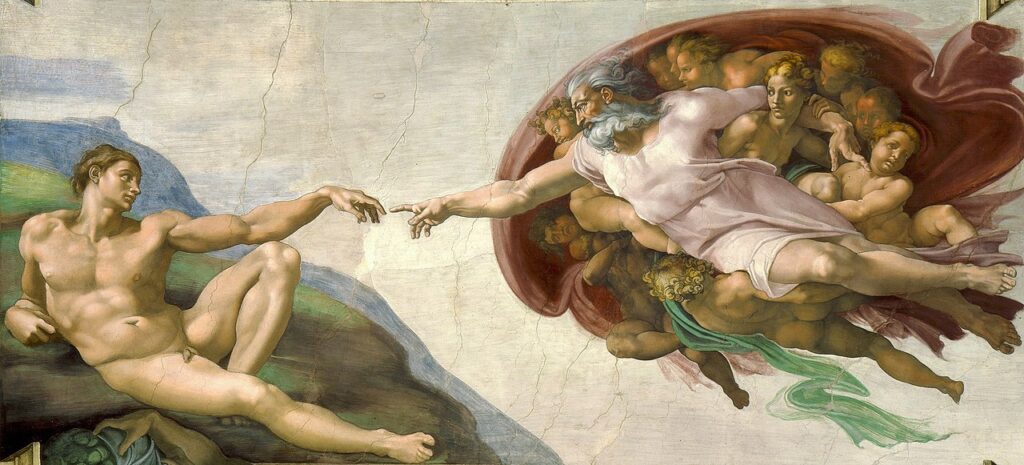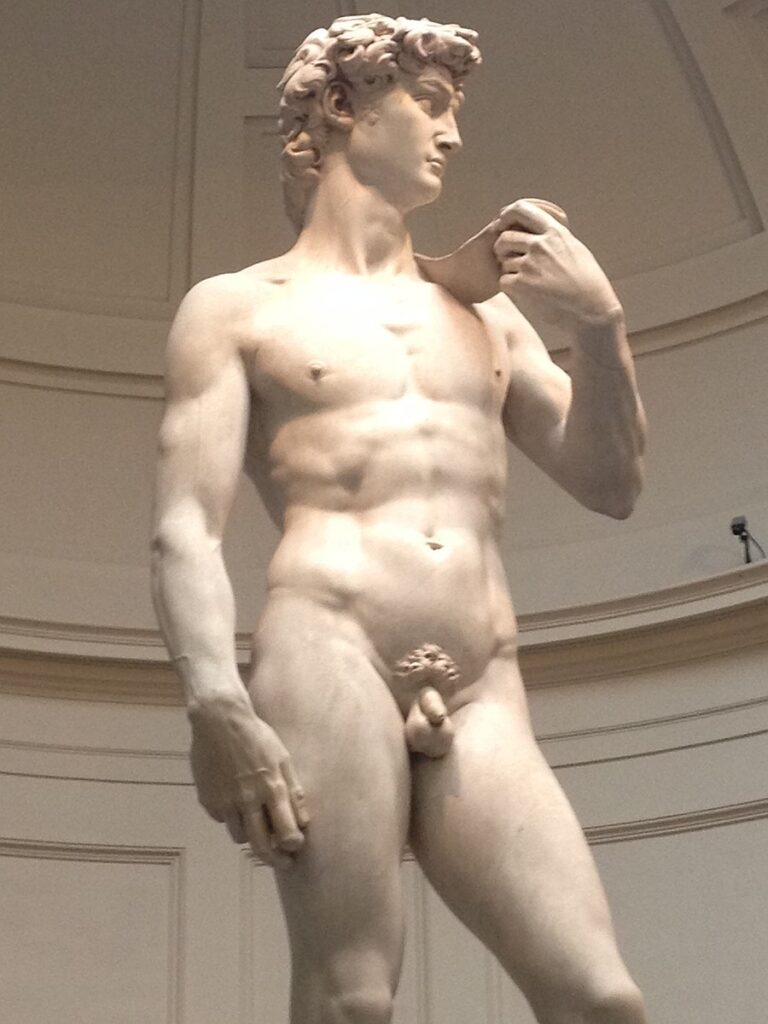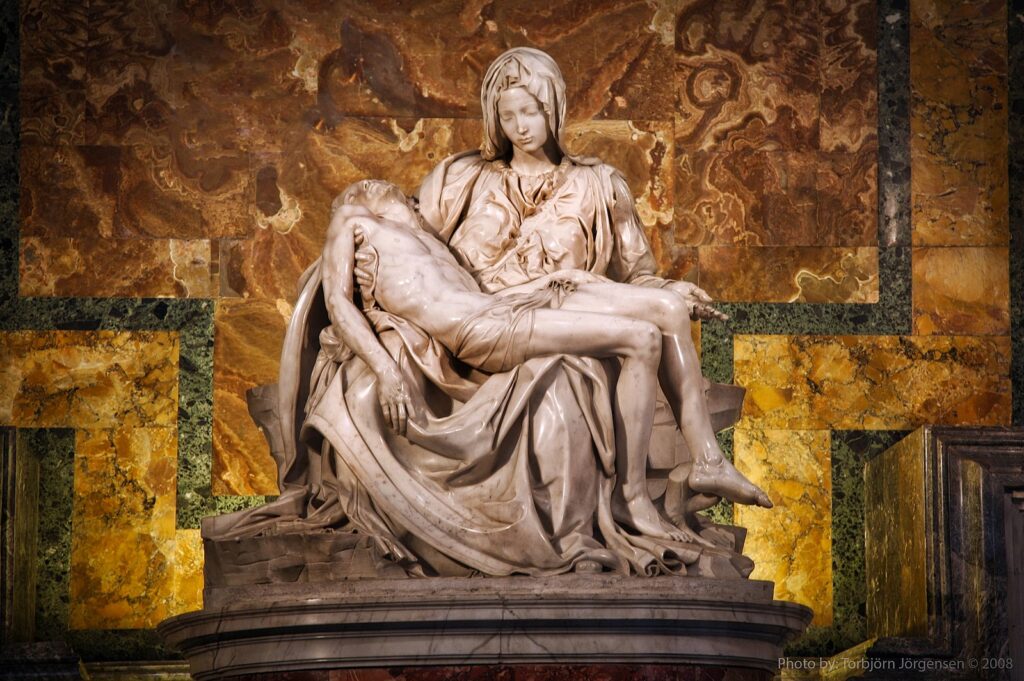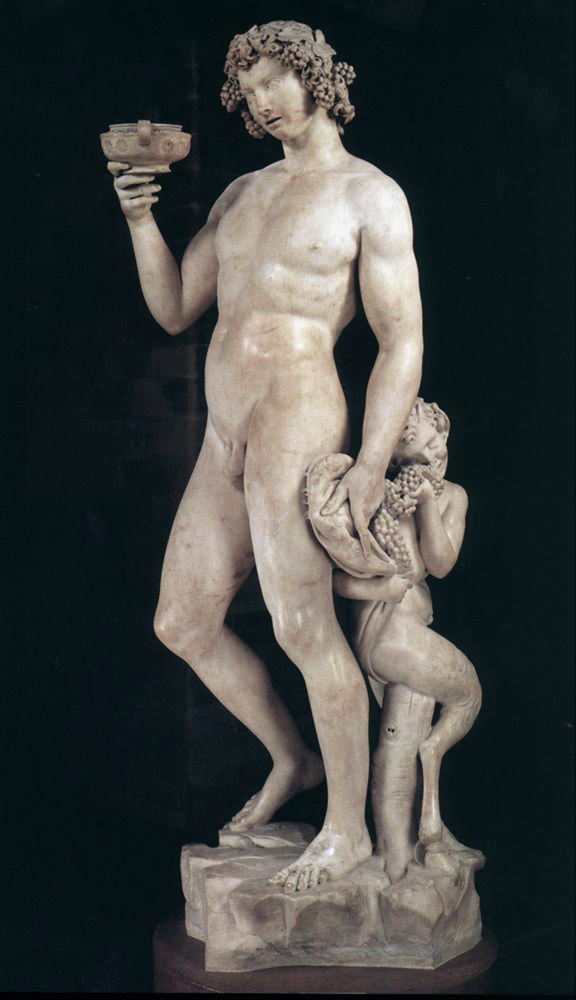Many famous artists have one magnum opus in their lifetime. Michelangelo just happened to have at least 10 in two artistic forms—sculpting and painting.
Michelangelo di Lodovico Buonarroti Simoni, one of the greatest artists in the world and of any era, famously painted the Sistine Chapel’s ceiling. The artwork has since been declared as one of the greatest artistic achievements of human civilization. Some call it the cornerstone of High Renaissance art.
But his famous sculptures are just as magnificent. Three are considered among the best Renaissance sculptures:
- David
- The Pieta
- Bacchus
The Collector, a scholarly website for ancient history and art enthusiasts, named the top five most famous Renaissance sculptures. The Pieta and David made it to the list. What makes these two and the Bacchus so special? Let’s discuss.

David
Michelangelo was only 26 years old when he created this masterpiece.
It is interesting to note that David had only been a teenager, young and small, when he slew the giant named Goliath. The David painting is anything but small. It stands 17 feet tall and purportedly weighs more than 12,000 pounds. The entire artwork was carved from a single block of white marble.
That marble had been taken from the quarry of the Fantiscritti. Donatello’s protege Agostino di Duccio was first commissioned to make the David statue in 1463.
It was to be mounted on the eastern part of the Duomo as a symbol of Florence’s strength and resilience. Di Duccio had started working on the bottom part of David’s statue but stopped when Donatello died in 1466.
Antonio Rossellino resumed work on the statute in 1476. But the contract was quickly rescinded for unknown reasons.
The block of marble stayed idle for around 25 years until the Operai, the committee that commissioned the statue, penned a new contract in 1501. This contract interested the greatest artists of that generation.
Leonardo da Vinci and Andrea Sansovino were reportedly interested in the work. However, it was 26-year-old Michelangelo who earned the gig.

Michelangelo managed to keep his work a secret for four years. He rarely slept during that time. When he did, he would still be in his work clothes and shoes so that when he woke up, he could quickly go back to sculpting David.
Aside from its massive size, Michelangelo’s David is interesting because of its uniqueness. Many have created the statute of David and most versions depict the giant slayer after he famously defeated Goliath.
In the case of Donatello’s David, he sculpted the hero in the aftermath of slaying the giant. David holds Goliath’s sword in his right hand while standing atop the giant’s severed head. (According to the David and Goliath story, David decapitated the giant after killing him with his slingshot.)
In Michelangelo’s version, David is shown before he defeats Goliath in battle. He has his slingshot over his shoulder and is in a contrapposto pose, which is described as relaxed but alert.
Today, Michelangelo’s David is displayed at the Academia Gallery of Florence. When it was finished, Florentine leaders and artists debated where the statue should be installed. It was then decided that David should stand at the entrance of the Palazzo Della Signoria.
The Pieta
Michelangelo was already a popular artist when he created David. It was why he got the contract in the first place. But he became known as one of the best artists of his generation when he created The Pieta.
The Madonna della Pieta or simply La Pieta is the depiction of Mother Mary in Mount Golgotha. She is cradling Jesus’ body after he was taken down from the cross.
It has been heralded as one of the most revered sculptures in the world. Some characterized it as a perfect balance between what was considered classical beauty by the Renaissance movement and naturalism.
Michelangelo was only 24 years old when he completed the sculpture in 1499. It was installed in St. Peter’s Basilica in Rome. Even after the decline of religious art, the Pieta remains relevant because of its emotional appeal.

Another interesting fact: the Pieta is the only artwork that Michelangelo signed. He did so after some people spread rumors that the masterpiece was made by Cristoforo Solari.
Hence, Michelangelo chiseled the following words onto Mary’s sash: “MICHÆLANGELVS BONAROTVS FLORENTINVS FACIEBAT,” which translates to “Michelangelo Buonarroti, the Florentine made this.”
The masterpiece was vandalized more than 470 years after its creation. An Australian geologist named Laszlo Toth brought a hammer down on the sculpture while claiming he was Jesus and had risen from the dead.
Mary lost an arm and her face was damaged. The Pieta has since been restored but people now have to look at it from behind its glass casing.
Bacchus
Bacchus may not be as popular as the Pieta or David, but the artwork put Michelangelo on people’s radars. Michelangelo was only 21 when he was asked to make an over-life-size statue of Bacchus, the Roman god of wine.
Cardinal Raffaele Riario, an art enthusiast, commissioned the artwork. However, he rejected Michelangelo’s Bacchus. Many speculated that it was because it looked like the artist was mocking the Roman god.
The sculpture depicts Bacchus with a goblet in one hand, and a cluster of grapes and a lion skin in the other. A faun stands behind him eating leftover grapes.
Riario’s banker, Jacopo Galli, bought the rejected Bacchus.

Many artists don’t become famous during their lifetimes. It usually takes the discovery of their art and their unavailability to make them famous.
Fortunately, that was not the case for Michelangelo who inspired a sense of awe among people who saw his work. The Bacchus is an excellent example. People see movement from Bacchus’ stance as well as androgyny.
The Medici family bought the Bacchus in the 1570s. Today, the sculpture is at the Museo Nazionale del Bargello in Florence. It is one of the museum’s top sculptures along with Donatello’s St. George and Bronze David, as well as Michelangelo’s Pitti Tondo.
The Influence of Michelangelo
Many have seen Michelangelo’s David and thought, “I want to be an artist!” The genius sculptor, painter, and poet has inspired generations of artists because of the intensity and naturalism of his work.
He was already a genius during his time and his impact hasn’t wavered even after more than 450 years after his death. If you can only look at three sculptures in your life, make it the David, the Pieta, and the Bacchus.